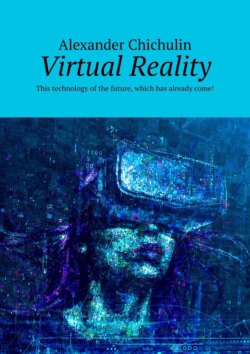Читать книгу Virtual Reality. This technology of the future, which has already come! - - Страница 3
This is the technology of the future, which has already come!
– What is virtual reality?
ОглавлениеVirtual reality (VR) is a computer-generated simulation of a three-dimensional environment that can be experienced by a person through a head-mounted display (HMD) or other immersive devices. In this virtual world, users can interact with the environment and other objects in a way that mimics real-life experiences. The technology behind virtual reality has been around for several decades, but recent advancements in computing power and graphics have made it more accessible and realistic.
The concept of virtual reality can be traced back to the 1960s, when Ivan Sutherland created the first head-mounted display, called “The Sword of Damocles.” However, it wasn’t until the 1990s that VR technology began to gain popularity, particularly in the gaming industry. Today, virtual reality has applications in a variety of fields, including education, healthcare, and architecture.
To create a virtual reality experience, developers use specialized software and hardware. The software generates a 3D model of the environment, objects, and characters, while the hardware consists of the display devices, motion sensors, and input devices that allow users to interact with the environment. The display devices can be a HMD, which typically includes two small screens that display images for each eye, creating a stereoscopic effect. Other immersive devices include gloves or suits that provide haptic feedback, allowing users to feel the virtual environment.
One of the key advantages of virtual reality technology is its ability to provide an immersive experience. This level of immersion can lead to a more engaging and memorable experience for users, which is why VR has become a popular tool in education and training. For example, medical students can use VR simulations to practice procedures before performing them on real patients. VR can also be used in architecture and design to provide clients with a virtual tour of a building or space before it is constructed.
While virtual reality technology has many benefits, there are also limitations to consider. One challenge is the cost of hardware and software, which can be prohibitive for some users. Another challenge is the potential for motion sickness or disorientation, particularly for users who are new to virtual reality.
Despite these challenges, virtual reality technology has already revolutionized many industries, and its potential for future applications is limitless. As the technology continues to improve and become more accessible, we can expect to see even more innovative uses of VR in the years to come.
